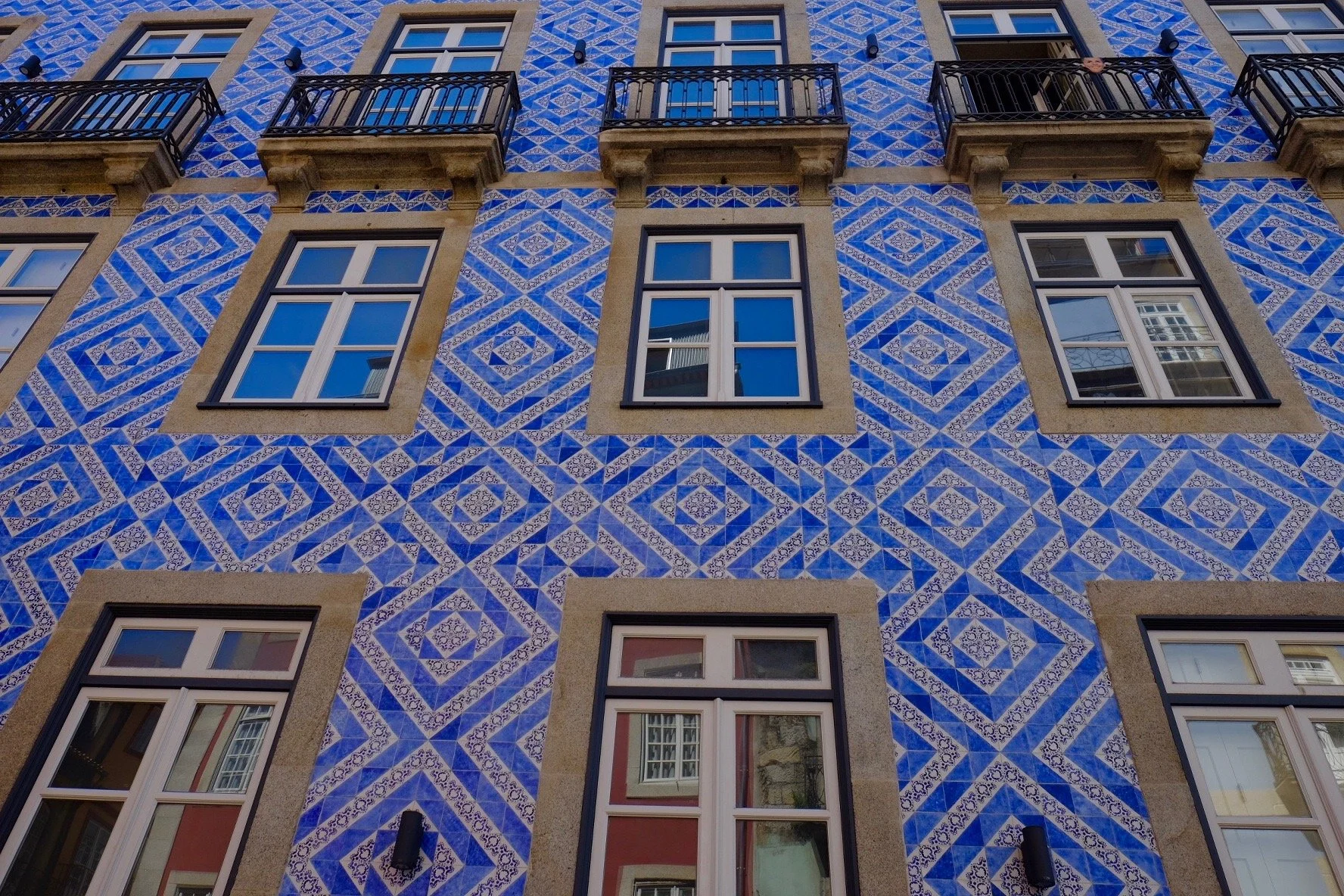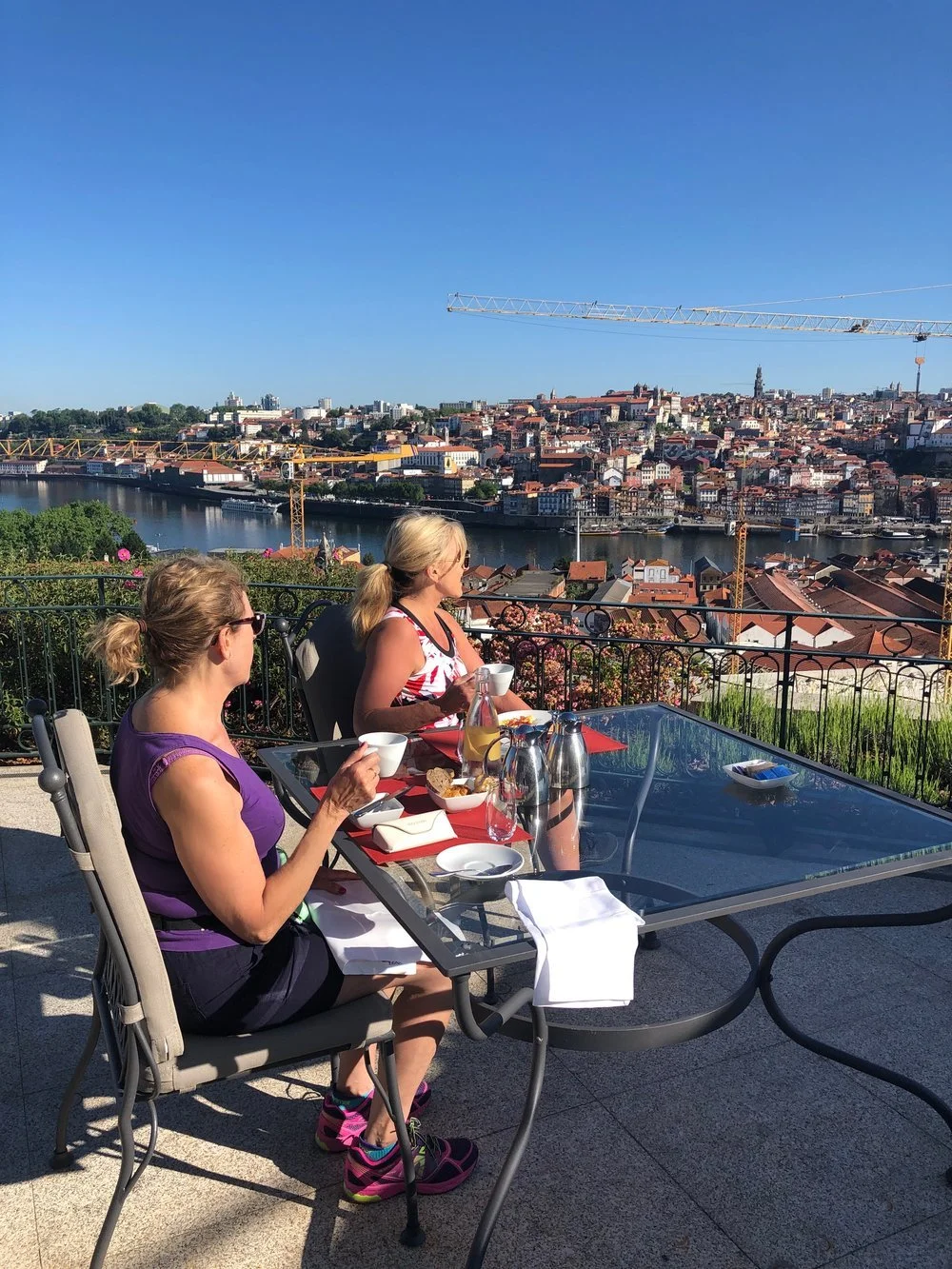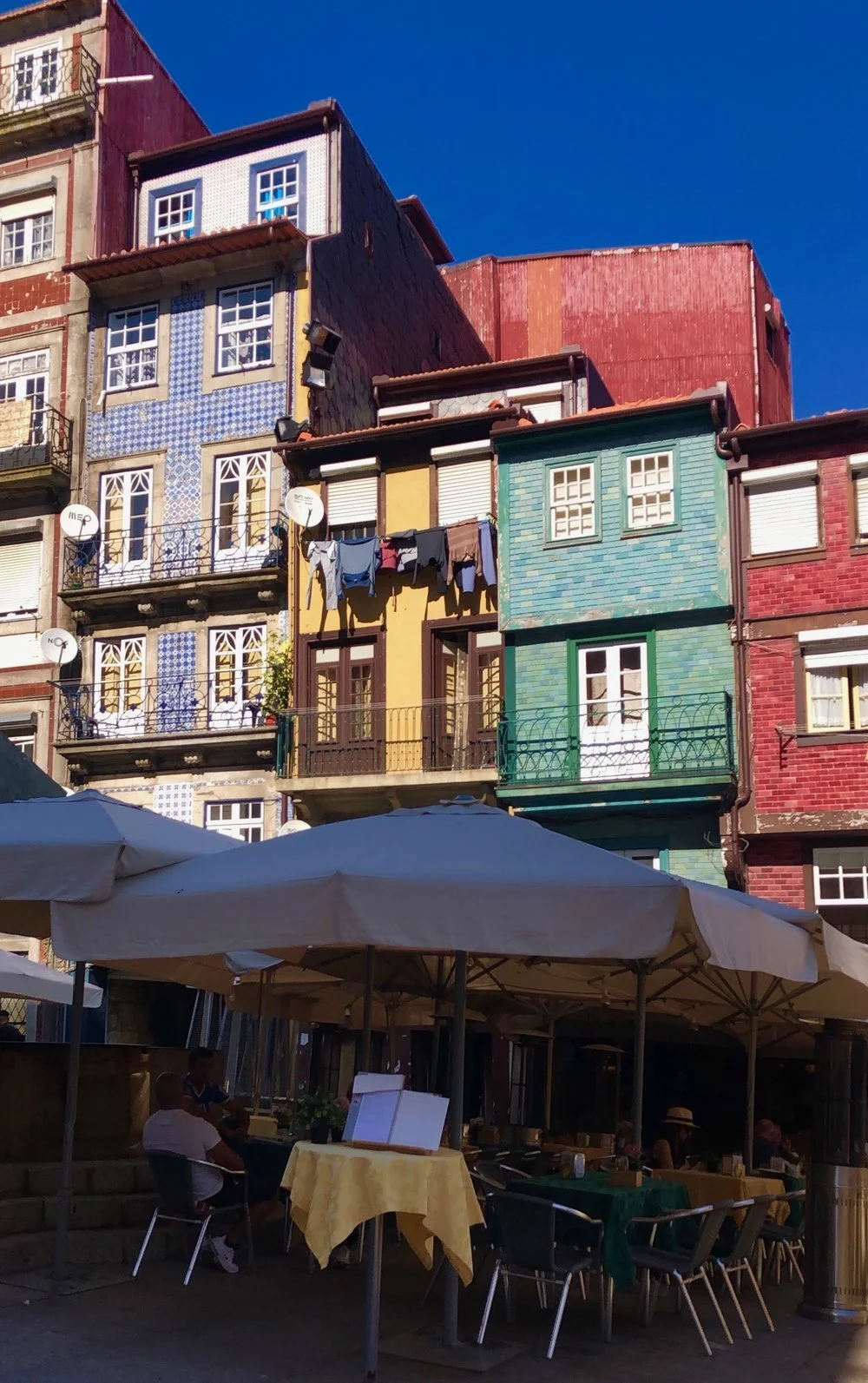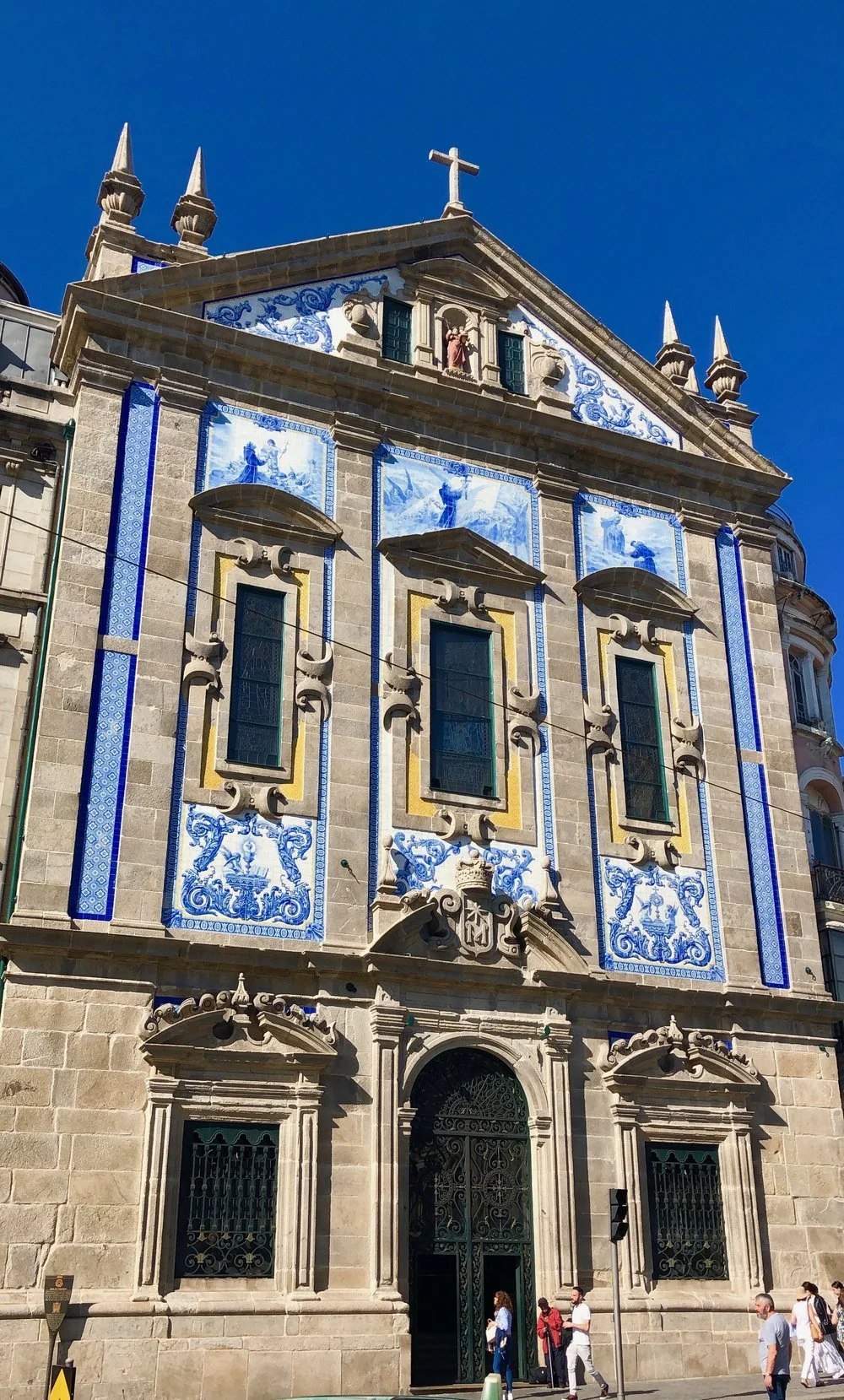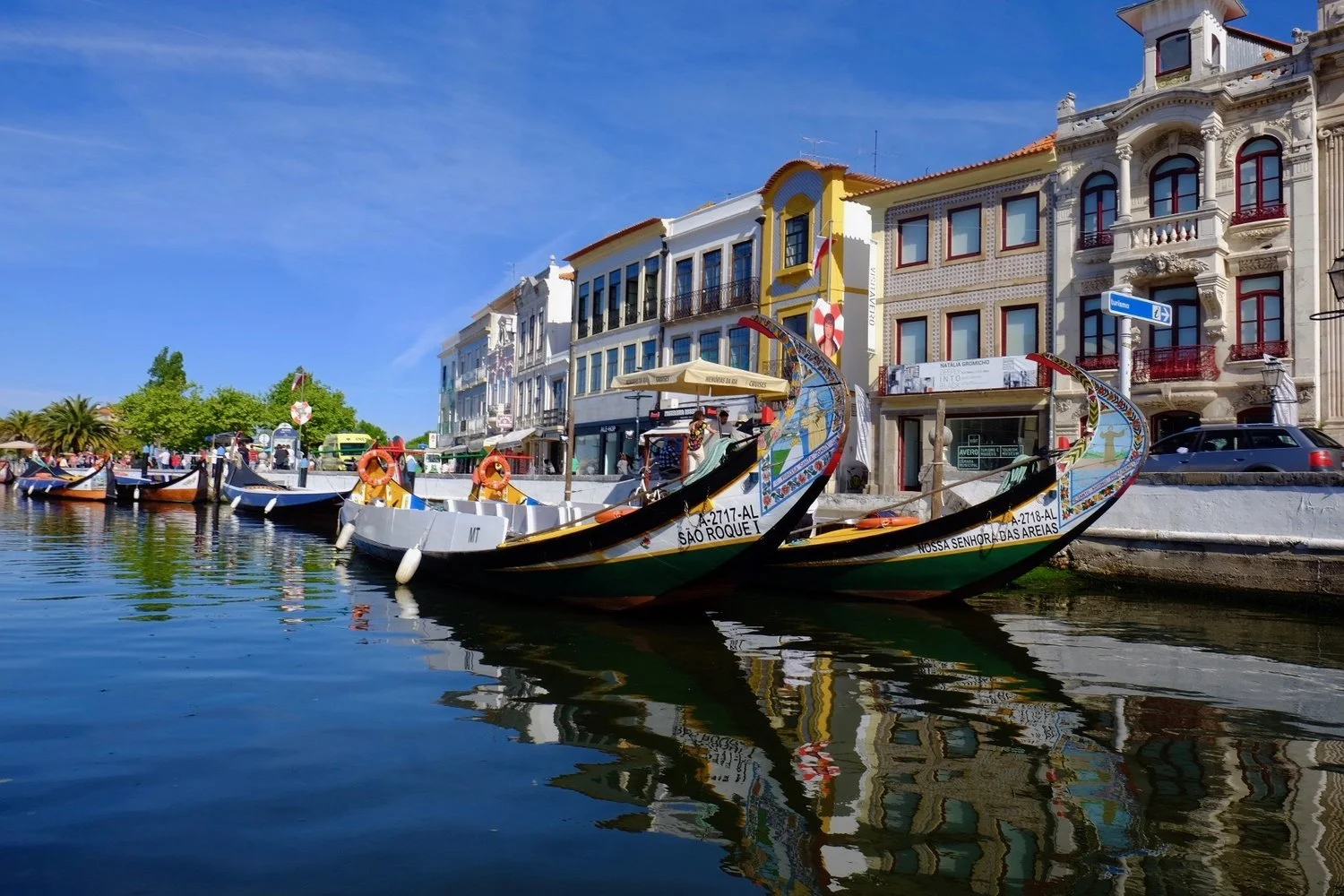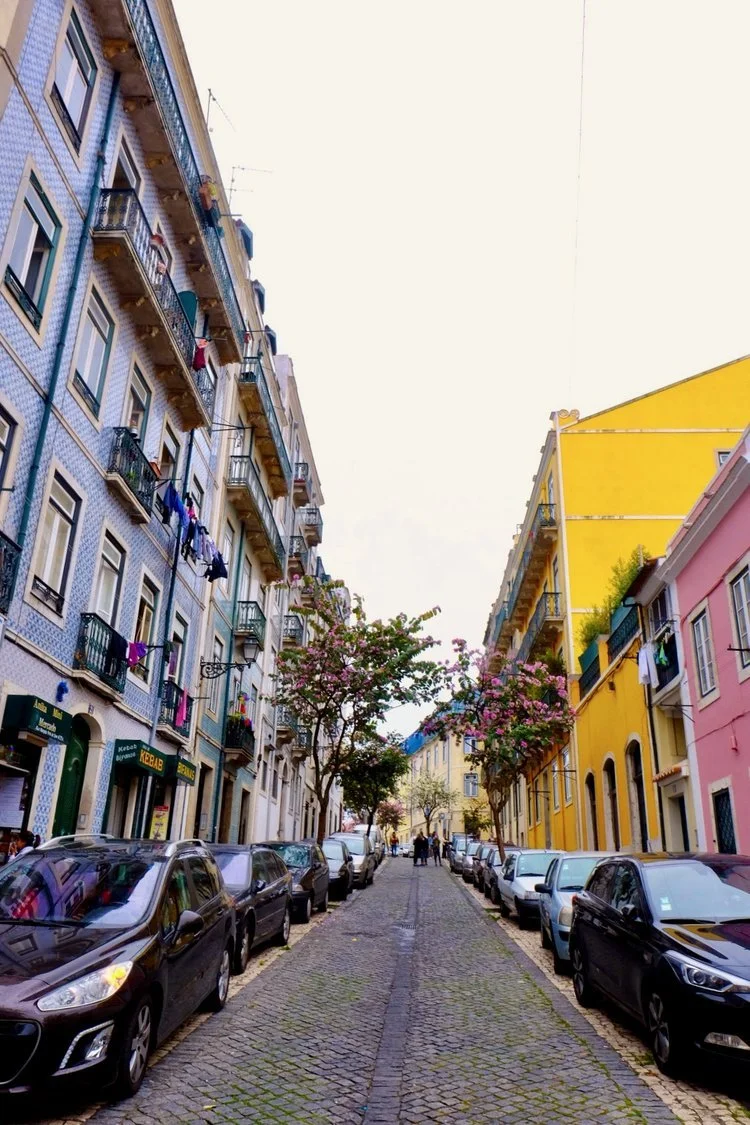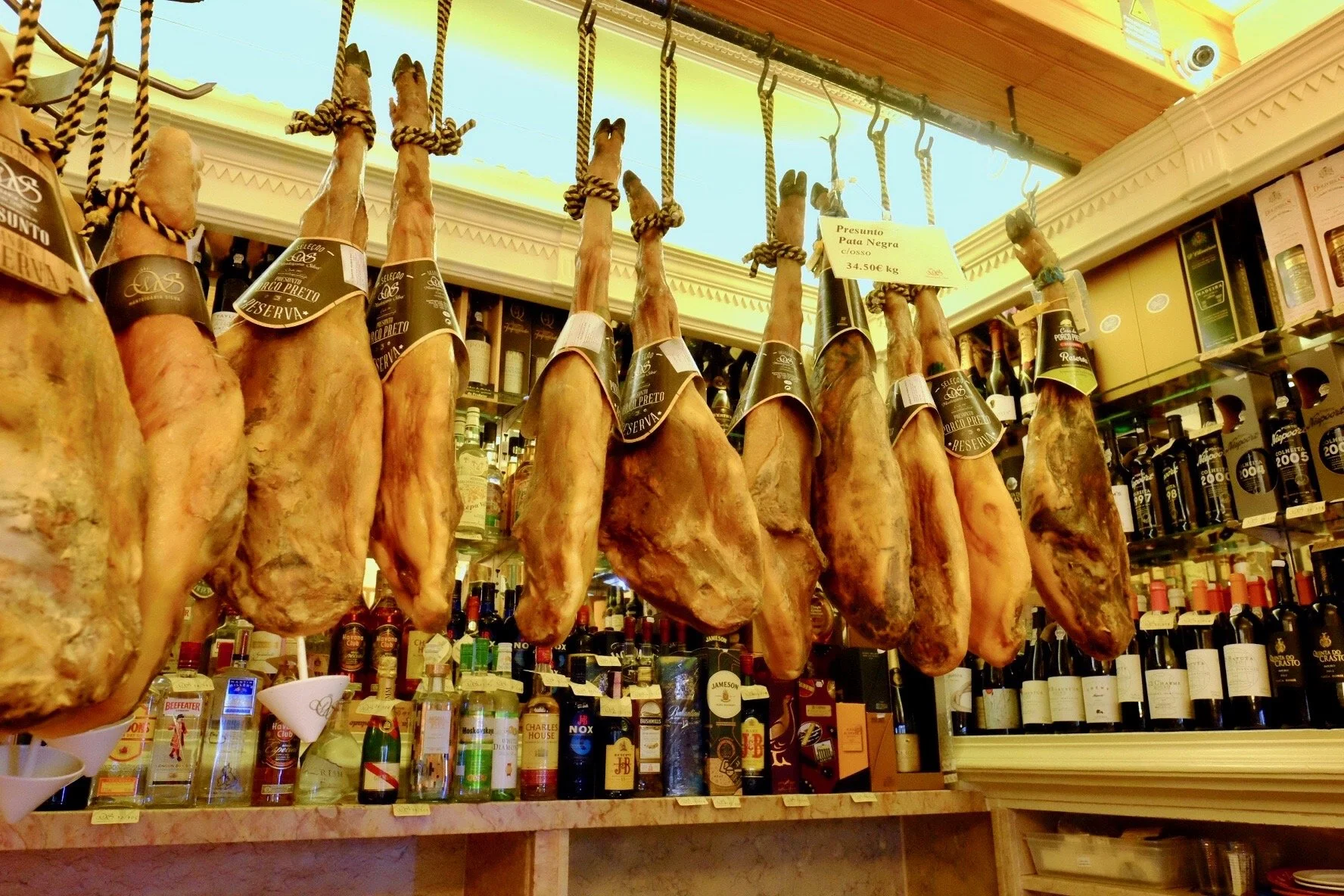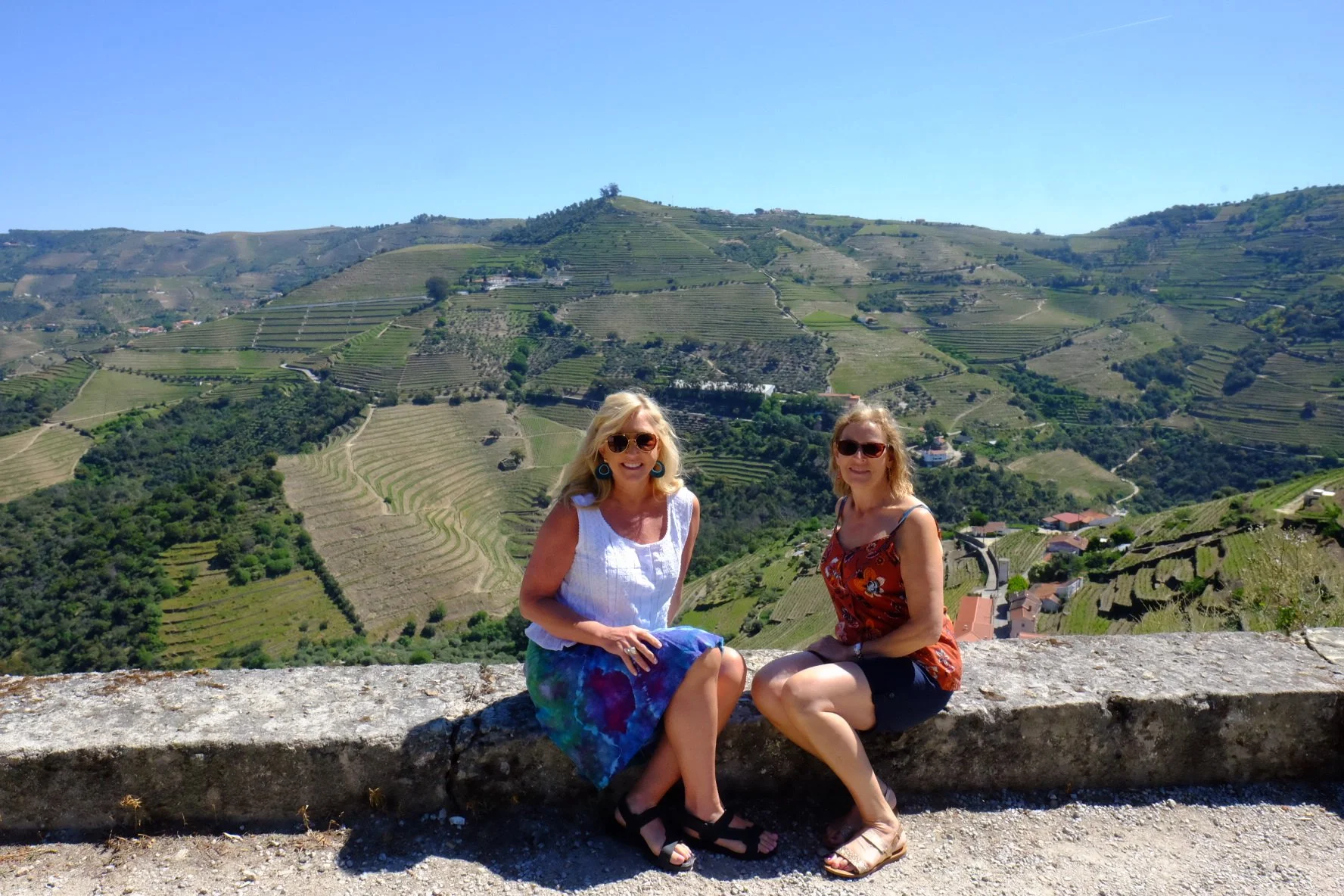How I Grew To Love Portugal
Portugal had never been a destination I had a huge desire to visit. I assumed Portugal was like the step-sister to Spain, but with trolley cars that take tourists up and down the hills of Lisbon. Was I ever wrong! I met my British bestie, Rachael at the Lisbon airport where we were driven by car three hours north to the quaint and colorful city of Porto. We arrived at the Yeatman Hotel, which sits on the hilltop overlooking the Douro River and the city center of Porto. The Yeatman was built in 2006, and sits next door to the most famous cellars of the Port wines, for which Porto is most famous. The hotel has a 2-Michelin-star restaurant where Rachael and I enjoyed a nine-course tasting menu prepared by Chef Ricardo Costa. We also attended a Master Wine Course in the wine cellar of the hotel where the sommelier taught us about the wines of Portugal.
We spent one day on a driving tour of the Douro Valley, east of Porto where some of the most delicious wines and olive oils in the world are produced, and the scenery is breathtaking. The steep hills were layered with hand-built wall terraces made of schist rocks, which connect all through the vineyards. These walls were built by hand over 100 years ago, and must be maintained due to the UNESCO regulations. Not only is the Douro famous for its 280 varieties of grapes for wine-making, they also produce the fortified Porto wines which were originally created as a result of preservation for wine by the Cistercian monks. Brandy was added to the wine to preserve some of the sugars and prevent the growth of bacteria. As a result, the fortified wine tasted delicious, and the art of making Port had begun.
Port is made from a variety of different grapes, and is strictly regulated by the DOC to determine the classification of quality it would eventually attain. The two main Ports are Ruby and Tawny, and they are aged (or not) and finished in a variety of ways before being consumed. Historically, the Port was transported in barrels down the Douro River to the city of Porto where they were aged and stored in cellars. The rigorous waters of the Douro were often unkind, and many boats filled with barrels of Port sank, and many lives were lost. In modern times, the Port is transported in tanks on trucks, which isn’t nearly as glamorous, but certainly safer. Perhaps the most famous Port house is Taylors, which is just meters away from the Yeatman Hotel. We took the engaging tour of the cellars, and had a tasting in their garden. Rachael enjoyed the Ruby Port, while I preferred the smoky flavors of Tawny Port.
Our driver, Heldem was kind enough to take us to his favorite restaurant in Porto located in the neighborhood where he lives, and is only known to locals. He called the owner before we arrived and told her to have an assortment of traditional dishes prepared for us. The small restaurant was in a shopping center, and was filled with families enjoying a late lunch. We were served salt-cod cakes, potato and salt cod pancakes, cheese and salami, and the most famous sandwich of the Porto area, the Francesinha, which is made with layers of bread, beef steak, ham, and cheese. It is served on a plate, and covered with a sauce made with tomatoes, chiles, and beer. It is traditionally eaten for lunch, and was very filling, but so tasty we had to stop ourselves from finishing it.
The old city of Porto, which faces the Douro River is called The Ribeira District and is filled with beautiful buildings in style of Roman, Gothic, and Baroque along narrow cobbled streets on steep inclines. There is a beautiful double decker bridge that crosses the Douro River, and allows for pedestrians to cross, as well as cars and a train on the upper level. We walked across the lower level to visit the city, and back on the top level, which gave us beautiful views of the city and river below.
Another city we visited was Aveiro, known as the Venice of Portugal. The city has many canals and lagoons that stretch out into the Atlantic Ocean. We took the obligatory gondola ride that is for tourists, and it was really quite charming. The gondolas, called moliceiros, were originally built to haul seaweed from the canals to the city to dry and use for fertilizer for the farmland. The coastal city of Costa Nova is nearby, and we had a delicious fish dinner at Dori Restaurant. The fish stew was a rich broth with large chunks of grouper and potatoes. We also enjoyed fried eel and calamari sprinkled with sea salt that is harvested locally. Costa Nova is known for its row of colorful striped houses along the waterfront. Since we were there just before the busy summer season we were able to see them without all the tourists. In Aveiro we toured the Portuguese porcelain factory, Vista Alegre, which has been in existence since 1812. There is a museum containing the original kilns used to fire the porcelain, and photographs of the very talented porcelain painters who embellished the gorgeous designs. Many were commissioned by royal families in the 1800s. I purchased a set of modern designed plates and bowls which I shipped home to be used for special dinner parties.
We spent our last days of our trip in the capital of Lisbon, a city with seven hills, which overlook the city center, the River Tagus, and the sprawling homes and cathedrals in the city. Of course, we rode the cable car that is one of the main means of public transportation, but mostly we just walked the many colorful streets and alleys. There were many shops selling items made of cork from the trees that grow in abundance in the south of Portugal.
Rachael and I both purchased a handbag made of the soft cork that we learned is from the “virgin bark” of the tree, meaning it’s the first harvest of the bark. The trees are left to grow another nine years before more cork is harvested, and after 18 years the bark is strong enough to be harvested for bottle corks used in wine bottles.
We took a sailing cruise in the bay along the coast of Lisbon with a very funny guide, André who described the landscape and buildings we were passing. We sailed under the 25 de Abril Bridge, which was built by the American Bridge Company using the same designs as the Oakland Bridge in California. Lisbon had a terrible earthquake in the 18th century that nearly destroyed the entire city. The people of Lisbon still talk about it, and many of their buildings and bridges are built to withstand another earthquake.
The highlight of our time in Lisbon was a food tour by Taste of Lisbon. Our guide was Filipa, the owner of the company, and she led us through the Mouraria neighborhood which was once a ghetto of Moors. It is said that Fado music, which is on the UNESCO world heritage list was born here. We visited a shop that sold the famous Portuguese ham called Jamón Ibérico, and the mountain cheese, Queijo da Serra, which is rich and buttery. We walked by shops selling salted cod, which the Portuguese have been eating for centuries, and use in many different dishes. The most common is the cod cake, which we ate with a delicious tomato rice on the tour. Ironically, the salted cod isn’t from the waters of Portugal, but is actually from the waters of Norway. The tour ended with coffee and the famous Portuguese tart, Pasteis de Nata which Rachael and I tasted nearly every day of our visit. They are only about two inches across, and can be eaten in a couple of bites.
We learned that the perfect tart should have a crust crispy enough to give a “crackle sound” when gently squeezed. The creamy filling is similar to the taste of creme brûlée, and they are truly delicious. We were told that the tarts were first made by Catholic monks before the 18th century, and have become Portugal’s most famous sweet treat.
Rachael and I were sad to end our visit of Portugal, and we’ve already researched the wineries we’d like to visit in the Douro on a future trip. We’ve heard that the south of Portugal is beautiful, and of course the island of Madeira is supposed to be stunning.

